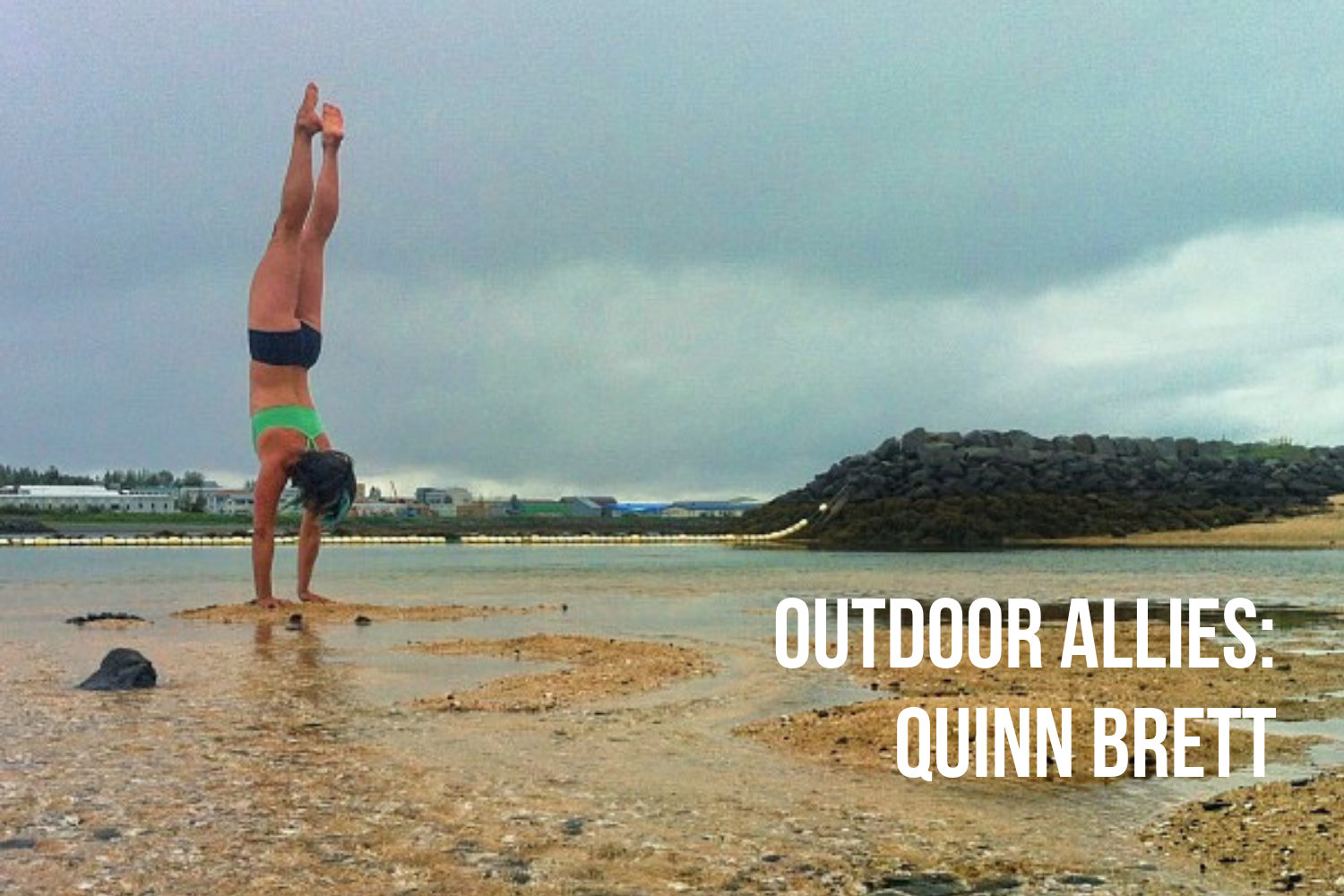Outdoor Allies: Quinn Brett
Ever wondered how you can do more for public lands but you aren’t sure where to start? Outdoor Alliance’s Outdoor Allies series explores how other outdoor adventurers got their start in advocacy work and their advice for how you can harness your passion for the outdoors into advocacy for the land and water you love. Quinn Brett worked as a climbing ranger in Rocky Mountain National Park but was fortunate enough to play in many National Parks since her youth. Her advocacy work for public lands has been growing over the years. In October 2017, she took a 100-foot fall while climbing the Nose of El Capitan, resulting in paralysis below the waist.
Tell us about your relationship with the outdoors.
I grew up fishing and running in Minnesota forests and when I was younger, I visited different National Parks every summer. By the time I graduated high school, I had visited most parks west of the Mississippi. Eventually I moved to Colorado to rock climb, bike, hike, fish, and do all the things that this lovely state offers.
You’ve been deeply involved in public lands for years. What put you on the path of advocacy work?
My background is in psychology and education, so teaching others and engaging in an endless stream of learning is something I naturally lean towards. Advocating for public lands seemed a natural way to give back being that my experiences in them as a youth were so formative. I think as we get older we realize we aren’t as invincible and we long to leave our mark, carry it through to the next generation. If public lands aren’t appreciated and aren’t spoken for, they won’t continue to exist for generations to come. It’s more than just playing in wilderness and soaking in views, these experiences cultivate growth and relationships with oneself and community.
How has your advocacy work changed since your injury?
Since taking a big fall climbing in Yosemite and becoming paralyzed, my advocacy voice has become louder. I don’t think it is due to confidence, perhaps it’s due more to a sense of impending doom. I have always known that life is short, with so many climbing tragedies in the community, but I was often too scared to voice an opinion, too concerned how others might perceive me. Now that I am in a wheelchair and after so much time in the hospital, I’ve lost my fear of vulnerability. It’s easier to push for my passions and advocate for what is important.
You’ve been educating people about spinal cord injury and building community for differently-abled accessibility in the outdoors. What has been most surprising about this work?
Oh man, I’m still surprised by how far there is to go and how dated everything is, from ADA (Americans with Disability Act) policy to recreation and day-to-day tools like wheelchairs, leg braces, etc. In the last 10-15 years, fellow members of the Spinal Cord Injury community have been building better tools and toys for us to enjoy wilderness again. Many of us were injured enjoying our public lands or being outside, skiing, paragliding, mountain biking, road biking, or kayaking. We have amazing bikes that are allowed on trails in National Parks as our means of hiking, but neither National Parks nor society as a whole seem to see this community as more than just lucky to be alive and bound to a wheelchair. We want to live and enjoy summits and trails, too! I hope my experience in both realms will help push an agenda and awareness. Any help is welcome!
What do you hope the future of public land s and the outdoors looks like?
I have always been a less-is-more kind of lady but my advocacy work has opened my mind to the multitude of users and values on public lands. We are all enjoying it but struggle to share it. I hope that more of us will be inspired to not just use public land, but to give back and also be more compassionate to other uses. If we want these places to last and to continue our experiences, we unfortunately do need more rules and structure as population and access increases.
Lightning round:
Your advocacy hero: Right now my Advocacy Hero is Rob Wudlick. He is an outdoor enthusiast, guide and suffered a cervical spinal cord injury in the Grand Canyon. He started an organization, GUSU2CURE. Rob has worked tirelessly to advance medical research and to advocate for the spinal cord injury community. Rob serves on the Minnesota State Council the for Spinal Cord & Traumatic Brain Injury Research Grant Program, and is an Advocacy Advisor for many national spinal cord injury research organizations.
Favorite place to get outside in Colorado: My backyard mostly. I miss and love Rocky Mountain National Park, particular the Longs Peak cirque and Lumpy Ridge, though Crested Butte and the Black Canyon are missed, too.
On your gear wishlist: Better disability rigs all the way around. A lighter wheelchair, a downhill ski rig (or rather a backcountry ski rig….thought one doesn’t really exist yet!) Oh, and leg braces that have a some articulation in the knee and ankle so I can walk around more then on my flat wood floors in my house :)




